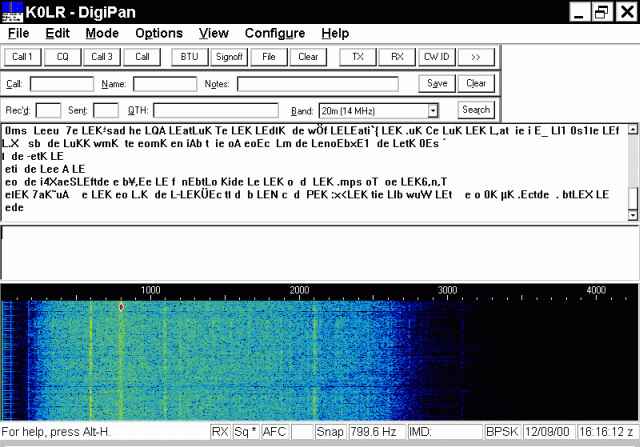
Figure 1.; PSK31 at -15 dB
This article describes my attempt to evaluate which modulation techniques are best for LowFER beacons. On-the-air reception was simulated by mixing each locally generated signal type with noise that was actually received on the LowFER band. To make sure that the noise didn't change in character between tests, I recorded a WAVE file of the noise, and mixed the same noise with every signal. WAVE files of each signal type were recorded at a sampling rate of 22050 samples per second at 16 bit resolution, using the Cool Edit sound editing program. I monitored the input signal levels on an oscilloscope and attempted to set them to exactly the same peak-to-peak amplitude for all modes. This wasn't a perfect process, but I believe the p-p signal levels were within 0.5 dB of each other. In all cases, the identifier string was "de LEK LEK LEK ", and the criterion for success was to get a positive reception of the LEK identifier. That is, enough repetitions or a solid enough signal to convince me that the identifier was LEK and not something else. Sources of signals were as follows:
CW at 12 WPM -- 400 Hz synthesized sine-wave generator, gated by a FET switch controlled by my BCN.EXE identifier software.
CW at 0.4 WPM -- 800 Hz synthesized sine-wave generator, gated by a FET switch controlled by my BCN.EXE identifier software.
PSK31 -- psk31sbw version 1.08 by G3PLX, with output set to 800 Hz.
MSK8 -- Stream version 0.85 by IZ8BLY, with output set to 800 Hz.
Coherent BPSK (C-BPSK) at MS25 (40 baud), MS100 (10 baud) and MS1000 (1 baud), with ET1 (error tolerant) coding -- Bill de Carle's AFRICA software, using his SD-DAC interface board with a default output frequency of 800 Hz.
Note that the same output frequency of 800 Hz was used for all of the "machine copied" modes, but that the real-time CW was recorded at 400 Hz because that is a much better frequency for aural detection of weak signals in noise.
In addition, I recorded a little over 5 minutes of; "typical" LF noise. The noise source was my IC-706 receiver, tuned to 184.000 kHz in upper sideband mode, and connected to my 8-foot loop with remote tuned preamp. Loop orientation was northwest-southeast. At the time of the recording, shortly after 10 PM CST on 11/29/00, band conditions were about average for that time of year. In other words, pretty noisy.
Recording levels as indicated by the Cool Edit VU meter were about -8 dB for all of the signal modes, and about -2dB for the noise sample. The oscilloscope also indicated a peak to peak noise amplitude of approximately twice the signal amplitudes, so that the p-p noise amplitude was about 6 dB stronger than the signal recordings. I believe that by making the peak-to-peak noise amplitude twice that of the signal amplitude, the rms noise power and signal power were about equal. No matter, because the objective was to get a comparison of the various modes relative to each other.
Next I used Cool Edit's "amplify", copy and mixing features to generate a number of combinations of signals and noise that could be used for subsequent evaluation of the various modulation methods. Cool Edit has controls which I used to make precise amplitude adjustment of the "signal" samples, which were then mixed with the unattenuated noise signal and saved as WAVE files which could be played back in continuous loop mode. Initially I used educated guesses at a signal amplitude that would be near the detection threshold for each mode, then played them back through the various receiving methods to see if the first guess was too high or too low. I didn't attempt to split hairs; signal amplitudes were adjusted in 3 dB steps. When signal to noise ratios are good, a 3 dB difference is barely noticeable, but it can make quite a difference when the copy is marginal. However, making adjustments 1 dB at a time and then playing back the files (sometimes for 10 or 15 minutes at a time) to see if there was any difference in copy requires a lot of dedication; more than I was able to summon. I just wanted to get a relative ranking of the modulation techniques under simulated "LowFER band" noise. I also realize that a different noise sample, even one taken on the same receiver at the same frequency at a different time, could easily skew the results by a couple of dB in either direction.
Decoding techniques used were as follows:
CW at 12 WPM -- My ears, aided at times by a DSP-59+ audio filter or the filter function in Cool Edit.
CW at 0.4 WPM -- Spectran version 4 build 127, and CRUNCH version 2.8.
PSK31 -- Digipan version 1.2.
MSK8 -- Stream version 0.85.
Coherent BPSK at MS25 (40 baud), MS100 (10 baud) and MS1000 (1 baud), with ET1 (error tolerant) coding -- Bill de Carle's AFRICA software.
Now for the results, with notes on each modulation mode.
PSK31 -- Since its introduction a couple of years ago, this mode has swept the HF digital world by storm, and has justifiably captured a lot of attention and praise. PSK31 outperforms conventional RTTY under most conditions, uses much less bandwidth, and requires only a computer and sound card for generation and decoding. However, I don't believe PSK31 was ever intended by its developers as a weak signal mode. The emphasis has instead been on preserving a speed that will keep up with reasonably good typists and allow a real-time keyboard to keyboard chat mode with a very user friendly interface. Variations which use slower baud rates and incorporate error-correcting codes have been written for outboard DSP engines, but I am not aware of any that will run on a Windows computer with only a sound card. I included PSK31 in these tests because of the frequent stories from users in the amateur community about printing readable copy on the screen when the signal is inaudible. Actually these reports are true, but they do not take several things into account. First, PSK31 is almost always sent with an SSB transceiver, and received with the transceiver in the same mode, using 2 kHz or wider filter bandwidths. Second, the warbling sound of PSK31 may not stand out as clearly in the noise as a continuous tone. Finally, the transceiver is typically adjusted for an offset of 800 Hz or higher, which is well above the optimum pitch for aural detection of weak signals in noise. In other words, if you try hard enough not to hear a signal, you won't hear it, but that doesn't make it a good weak signal mode.
Having said all that, PSK31 performs quite well, and produced good copy when the signal amplitude was reduced by 12 dB from the standard reference level. Partial copy is still possible at -15 dB, as shown in the DigiPan screenshot below. Several solid "LEK" identifiers (remember, the original repeated message is "de LEK LEK LEK; ") appear on the screen, and I would call this a confirmed reception by LowFER beacon standards. Things might be a little different, though, if I had sent a 5 or 6 character call sign and/or a signal report. All in all, I'd say that PSK31 is good for a rating of about -15 dB.

Figure 1.; PSK31 at -15 dB
12 WPM CW -- Sometimes known as POM (plain old Morse), this is the oldest and least sophisticated of the digital modes. Opinions differ as to what is the optimum speed for weak-signal reception. I prefer something between 10 and 15 WPM, so that my brain can compare several repetitions over a short time and do the same thing as the "frame grabber" in de Carle's BPSK software. Others prefer speeds down around 5 or 6 WPM. Anyway, my test used 12 WPM at a frequency of 400 Hz. In the brief wave file below, the CW signal has been attenuated by 18 dB prior to mixing with the noise. By the way, this WAVE file also shows what kind of "noise" I was using in the tests. It consists of a number of carriers of different intensity, superimposed on the usual LF background of static crashes. An ear that is "tuned" to 400 Hz CW will be able to pick out the faint CW signal, especially if the recording is played back in continuous loop mode. With a little assistance from a DSP audio filter, the signal stands out more clearly, although at the same time it gets "blurred" by ringing because of the static crashes. The second WAVE file below is the same signal and noise, passed through a filter bandwidth of approximately 50 Hz in Cool Edit. I'd say this is pretty close to the threshold for being able to copy a LowFER beacon ID, so we'll give plain CW a score of -18dB.
CW at -18 dB, 2 kHz noise bandwidth
CW at -18 dB, after DSP audio filter with 50 Hz bandwidth centered at 400 Hz
Coherent BPSK at MS25, ET1 -- This is a 40 baud (25 millisecond bit period) mode with a special error detection/correction code created by Bill de Carle. Instead of the 10-bit code used by C-BPSK in ASCII mode, the ET1 transmissions use 16 bits per character. This slows the speed down by about 40 per cent, so that a mediocre typist like me can get ahead of it (sometimes). The main purpose, however, is to provide improved copy under noisy conditions. In the photograph below, COHERENT/AFRICA was trying to copy the MS25 ET1 message at -18 dB. Although fragments of the identifier were appearing on the screen, it didn't look like things were improving with time. About halfway down the RECEIVE screen, I decided to give the software a little help by telling it that the message repeats every 16 characters, and told it to "GRAB" over 5 consecutive message cycles. After that, copy improved dramatically, but at the expense of a five-fold reduction in equivalent transmission speed. More about that later. With that qualification, MS25 also gets a score of -18 dB.
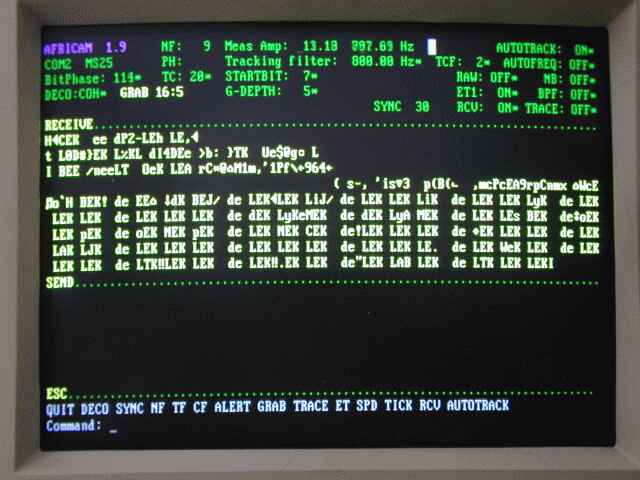
Figure 2.; Coherent BPSK at MS25, ET1, -18 dB level
Frame grabber turned on about mid-screen
MFSK-8 -- While searching the web for the most recent version of Spectran, I ran across a reference to "MFSK" software with error correction that would run on a sound card. Thinking that this might be minimum shift keying, I downloaded the "Stream" software, written by IZ8BLY. The excellent documentation that came with Stream clarified that MFSK refers to a multiple-tone frequency shift keying mode. Although the required bandwidth is considerably greater than that of PSK31 or C-BPSK at comparable rates, the multiple tone technique should be more robust than PSK over HF paths with rapid fading. Not usually a concern for LowFERs, but the technique sounded interesting (literally; sounds like music) so I included MFSK-8 in my tests. As seen in the screenshot below, taken with a signal attenuation of -18 dB, MFSK8 performs quite well. There is one capture of the complete message string, and a number of individual "hits" on LEK. I'd give MFSK8 a score of -18 dB. However, I don't know of an easy way to key my LowFER transmitter with it, and its 300+ Hz bandwidth could present a serious QRM problem. If RM were sending MFSK on 189.8, I would probably never hear OK or TEXAS!
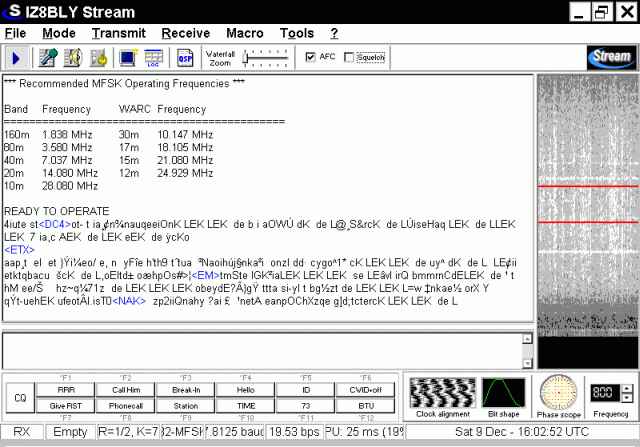
Figure 3.; MFSK8 at -18 dB
C-BPSK at MS100, ET1 -- This has become the de facto standard for US LowFER BPSK experiments. With a keying rate of 10 baud (100 milliseconds per character) and ET1 coding, the effective transmission rate is approximately 6 words per minute. This qualifies it as a "real time" communications mode in my opinion. Heck, in the heyday of the Novice license, many great ragchews were conducted at 5 or 6 WPM. One limiting factor in the acceptance of C-BPSK has been the need for a special Sigma Delta interface board between the receiver and computer, and the other has been the requirement for very good frequency agreement between the receiver and transmitter. Recently, Bill de Carle developed a decoder called AFRICAM that can use either a Sigma Delta board or a sound card interface. As for the frequency accuracy requirement, my primary BPSK receiver is an IC-706 without the special temperature compensated oscillator. At LF, it isn't difficult to get frequency accuracies of 0.5 Hz or better, which is about what is required for optimum reception of MS100 signals. In the screenshot below, the AFRICA decoder is being used, and the signal has been attenuated by 24 dB. There are lots of errors, but also a number of hits on the complete message string, with no assistance from the frame grabber. Also, there was a slight sync jump each time the test WAVE file looped back to the beginning, which caused some of the decoding errors on the screen. MS100 ET1 easily clears the negative 24 dB hurdle, and is actually faster than using MS25 with the frame grabber.
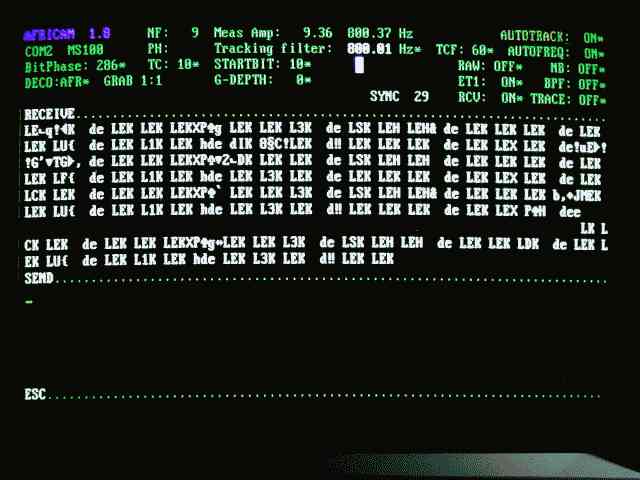
Figure 4. Coherent BPSK, MS100 ET1, -24 dB (no frame grabber)
CW at 0.4 WPM -- Usually referred to as QRSS, very slow speed CW has been used very successfully by European hams on their LF allocations, and is gaining favor among US LowFERs looking for new "personal best" DX reports. No modifications are required to a standard CW transmitter, and frequency requirements are not nearly as stringent as those of C-BPSK. Decoding can be done with any of several freeware spectrogram programs that; use a sound card to perform digital signal processing and produce a "waterfall" type of frequency versus time plot. Using the popular Spectran program, I obtained the screenshot below. During the first portion of the scan, the input was from a WAVE file with the signal attenuated by 27 dB before mixing with the noise. Then I stopped the scan briefly, and switched to a WAVE file with 30 dB signal attenuation. You can make out the somewhat blurred dots and dashes of "LEK LEK" (at a frequency of 800 Hz) on the left portion of the screen, captured from the -27 dB file. To the right of the dark bar, the signal is "DE LEK", plus the first dit of another character, captured from the -30 dB file. With some tweaking of the controls, and maybe a few repetitions, it should be possible to get a positive beacon identification at -27 dB, although I wouldn't go as far as giving 0.4 WPM CW a -30 dB score.
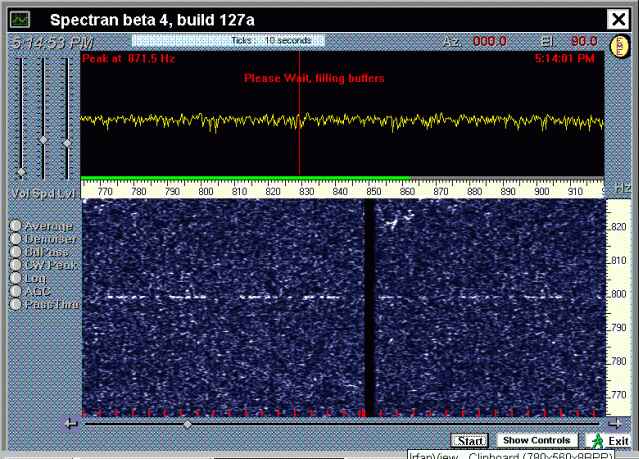
Figure 5.; Slow CW at -27 and -30 dB
For comparison, I've included a WAVE file obtained using the CRUNCH software on the -30 dB slow CW signal. The compression ratio was 32, input frequency of 800 Hz with a 100 Hz filter, output frequency of 400 Hz with a 50 Hz bandpass filter. I subsequently converted the CRUNCH output WAVE to 8k samples per second, 4 bit coding, which reduces file size drastically but produces some quality degradation. However, if you strain a bit and listen through a few loops of the file, it should be possible to hear the LEK identifiers in there.
C-BPSK at MS1000 ET1 -- With 1-second bits and ET1 coding, it takes 16 seconds to send a single character. On the average, that's about 50 per cent faster than 0.4 WPM CW, but there are some penalties which I'll discuss later. The screenshot below was taken with a signal attenuation of 30 dB. Copy would be perfect after the initial sync period, except that there is apparently a noise burst that takes out the E in the last LEK of each message cycle. Since the recordings were made at 22050 samples per second, 16 bits, the WAVE files got pretty huge. I limited the file length to one repetition (four minutes) of the de LEK LEK LEK message string, which explains why the same thing keeps happening over and over.
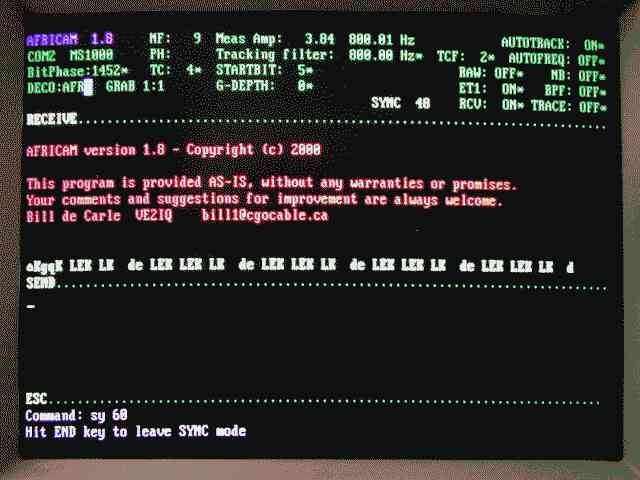
Figure 6.; Coherent BPSK, MS1000, ET1 at -30 dB
In another test, there were quite a few hits on the LEK identifier at MS1000 even with the signal attenuation at -33 dB. However, the sync time was MANY minutes. That is one penalty of C-BPSK at very slow speeds and low signal levels. Sync acquisition can be extremely slow, and during that time you have no way of knowing whether a signal is present or not. At least with the QRSS spectrogram display there is some indication almost immediately. The other penalty is that frequency accuracy must be within about 0.1 Hz or better. Sounds pretty tough for the average ham, but I did copy the "HDO" beacon of Cliff, K7RR at MS1000 over a 1600-mile path with my "stock" IC-706. And that was before I found out where the rig's frequency trim adjustment was located! As for the slow sync acquisition time, the AFRICA and AFRICAM software have a TRACE mode that will save the data to disk for later analysis. You can leave the computer running all night and check in the morning to find out if there were any "hits" on a given text string.
The usual disclaimers apply to these results. Your mileage may vary, etc. I was trying to find the best modulation techniques for LowFER beacon operation, which can have a completely different set of user requirements than two-way communication on any band. An attempt was made to simulate actual reception of signals in noise. However, on-the-air results could be considerably different because of several factors. First of all, the character of the noise and interference changes drastically with time of day, frequency, time of year and location. In these tests, the noise sample was mixed linearly with the signal, whereas linearity may not be preserved in actual reception. Like many other receivers, the IC-706 offers a choice of fast or slow AGC but does not allow you to turn the AGC off. Large noise bursts will cause the AGC action of the receiver to reduce the available signal amplitude at the receiver output, effectively introducing amplitude modulation of the signal. My noise sample also has some "holes" following large noise spikes because of this AGC effect. Amplitude and phase variations in the signal because of propagation effects would adversely affect the differentially coherent demodulation techniques used in the PSK modes. Fortunately, propagation typically changes very slowly on LF compared to the rapid QSB, and even "flutter" often observed on HF.
Despite all these uncertainties, the results seem consistent with what one would expect. Slower and slower transmission allows you to detect weaker and weaker signals; error correction provides cleaner "copy"; phase-shift keying is superior to plain old CW at the same baud rate. No surprises there. Computer-assisted reception makes it possible to copy signals that are way, way below the levels required for real-time CW. If you are willing to wait a very long time to receive a message, there is probably no lower limit on detectability except for the fact that even on LF the band is going to "drop out" eventually. For some of us, though, watching characters or pictures of dots and dashes show up on a computer screen just doesn't provide the same feeling of accomplishment as copying a weak CW signal that's way down in the noise.
At the time of this writing, all of the software described in this article could be downloaded from either of these sites, which appear to have identical content:
http://home.wanadoo.nl/nl9222/software.htm
http://leden.tref.nl/~nl9222tv/software.htm
To make sure that you have the latest version of Bill de Carle's software, I recommend that you go directly to his web site at http://cafe.rapidus.net/bill1/bbs.htm